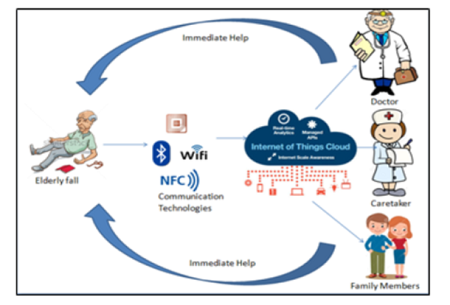


Indian Journal of Science and Technology
Year: 2021, Volume: 14, Issue: 30, Pages: 2494-2503
Original Article
Rashmi Gupta1*, Jeetendra Kumar1
1Assistant Professor, Atal Bihari Vajpayee University, Bilaspur (C.G.), India
*Corresponding Author
Email: [email protected]
Received Date:11 May 2021, Accepted Date:13 August 2021, Published Date:13 September 2021
Objective: This work aims to develop a human fall detection method that is trained using data of routine movement of people only collected from accelerometer sensor to stay away from irregular fall detection model. This work also aims to analyze the effect of calculated features on the fall detection model. Methodology: In the proposed method, The fall detection model is built using one-class classification. At first, data of accelerometer sensor in three directions has been used to detect the fall events. Five feature vectors i.e. resultant, variance, standard deviation, Root Mean square, and Euclidean Norm have been calculated. These four features along with one class SVM have been used to build fall detection model in ways (1) Using only resultant features only (2) Using all calculated features. This model was trained using only activities of daily living (ADL) and tested on both daily living activities and fall activities. Findings: It is found that when the model was built using all calculated features, the sensitivity was 100% and specificity was 94.92% when mobile is in the pocket and; sensitivity was 100% and specificity was 93.61% when mobile is in handbag which is better than when the model was built using resultant features only. We have also studied the effect of individual features on this fall detection model and it is found that variance played a very important role to classify fall activities and ADL activities. Novelty - The proposed fall detection method is built using one-class classification so that the proposed model will be reliable to detect falls in real life. In the proposed work, the effect of features on the fall detection model is also analyzed.
Keywords: One class classification; accelerometer; outlier detection; fall detection; Bagging classifier
© 2021 Gupta & Kumar. This is an open-access article distributed under the terms of the Creative Commons Attribution License, which permits unrestricted use, distribution, and reproduction in any medium, provided the original author and source are credited. Published By Indian Society for Education and Environment (iSee)
Subscribe now for latest articles and news.